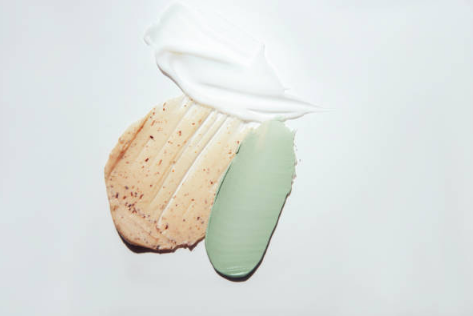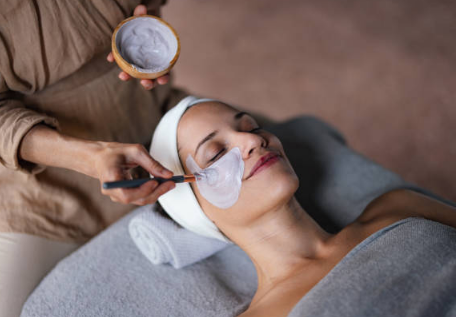Clay masks are skincare treatments used at home or in clinics, made from natural clays. Depending on the type of clay used, they’re believed to offer a variety of skin benefits.
Clay has been used for centuries thanks to its healing properties. Historically, Aristotle wrote about “healing clays,” and Cleopatra was said to use masks made from Dead Sea mud and clay to maintain her beauty.
While scientific studies on clay masks are limited, existing research suggests promising effects. Clay masks can improve skin texture and tone, absorb excess oil, and help manage acne.
You don’t need to use a clay mask every day—once or twice a week is enough to see benefits while minimizing side effects like irritation. Since there are many types of clay masks, choosing the one that suits your skin type and concerns is key.

Types of Clay Masks
There are many types of clay used in masks, each with unique properties. Some are better for oily or acne-prone skin, while others help reduce inflammation or redness.
Bentonite Clay
Bentonite is a highly absorbent clay derived from volcanic ash and made up of tiny glass-like particles. It’s named after Fort Benton, Montana, where it was first discovered.
In the U.S., bentonite is primarily mined in Wyoming, Montana, California, Arizona, and Colorado. Other major producers include Greece, Brazil, Argentina, and Canada.
Although commonly used in skincare, bentonite is also used industrially—for instance, to remove oil from fast-food wastewater. It can absorb up to 50–70% of its dry weight in oil, making it about seven times more effective than activated charcoal.
Because of its powerful oil-absorbing properties, bentonite masks can be extremely drying. They also offer antibacterial and anti-inflammatory effects, which may help heal acne. Bentonite clay is best for oily skin but generally not suitable for dry skin.
Kaolin Clay
Kaolin is a soft white clay named after Gaoling, a hill in China where it was first mined. It’s widely used in clay masks as well as porcelain, ceramics, and paper. A French Jesuit missionary introduced it to Europe in the 18th century.
Kaolin clay masks help control oil without overly drying the skin. They also remove impurities and may benefit those with acne.
Though usually white, kaolin can come in different colors depending on added ingredients. For example, Australian Pink Clay—a form of kaolin suited for sensitive skin—is pink instead of white.
French Green Clay
Also known as “healing clay,” French green clay is mineral-rich and comes from the coast of France. Its green hue comes from decomposed plant matter. Like other clays, it helps draw out impurities from pores and may improve circulation.
Although research is limited, one early study found that green clay inhibited bacterial growth. Researchers suggested it may be useful for treating Buruli ulcers (a chronic skin disease) and other skin conditions.
Moroccan Clay
Also called Ghassoul or Rhassoul clay (from the Arabic ghasala, meaning “to wash”), Moroccan clay has been used for centuries for skincare and hair care.
Supporters claim it’s especially beneficial for sensitive or mature skin. It may improve skin tone, reduce impurities, and increase skin elasticity. However, evidence is still limited.
One review of three small case studies found Moroccan clay helped treat skin damage around stoma sites. Researchers concluded that it could be an affordable barrier to prevent further skin damage.

How to Use a Clay Mask
Whether you’re using clay masks to absorb oil, brighten your skin, or remove leftover makeup and dirt, the general application process is usually the same. However, directions may vary slightly by product.
Always follow the instructions on the packaging, which should tell you how often to use the mask, how long to leave it on, and the best way to remove it.
General Steps:
-
Cleanse Your Face
Always apply a clay mask to clean skin so it can absorb more effectively. Use a gentle, alcohol-free cleanser and massage it in with circular motions. Rinse with lukewarm water and pat your face dry with a towel. -
Apply the Mask
Remove excess moisture and apply the clay mask according to the instructions. Start with a thin layer and spread it evenly over your face. Use your ring finger—especially near the eye area—as it’s the gentlest. Some products come with applicators like brushes or spatulas. -
Let It Dry
Wait 5–10 minutes for the mask to dry. During this time, it absorbs oil, dead skin cells, and other impurities, improving your complexion. If you have dry skin, you may need to rinse it off sooner to avoid irritation. -
Rinse Off
After 5–10 minutes, rinse the mask off with lukewarm water. Lukewarm water is less drying than hot water and helps your skin better absorb moisturizers. -
Moisturize
After completely rinsing off the mask, pat your face dry and apply a moisturizer suitable for your skin type. If your skin is dry, use a product with hydrating ingredients like ceramides or hyaluronic acid. If you have sensitive skin, avoid “organic” moisturizers—natural ingredients can sometimes trigger irritation or allergies.
Typically, clay masks should be used 1–2 times per week. Overuse can dry out or irritate your skin.